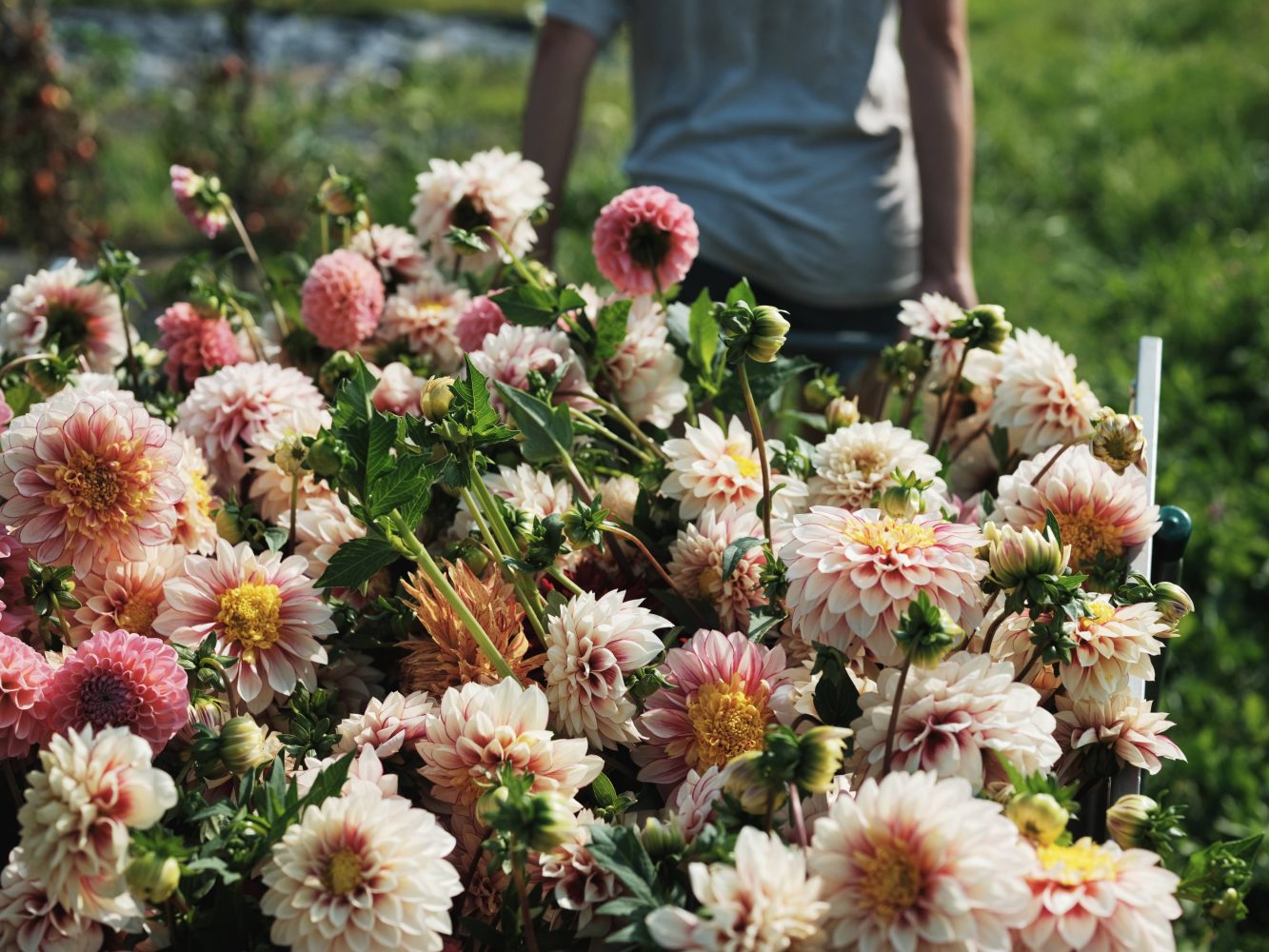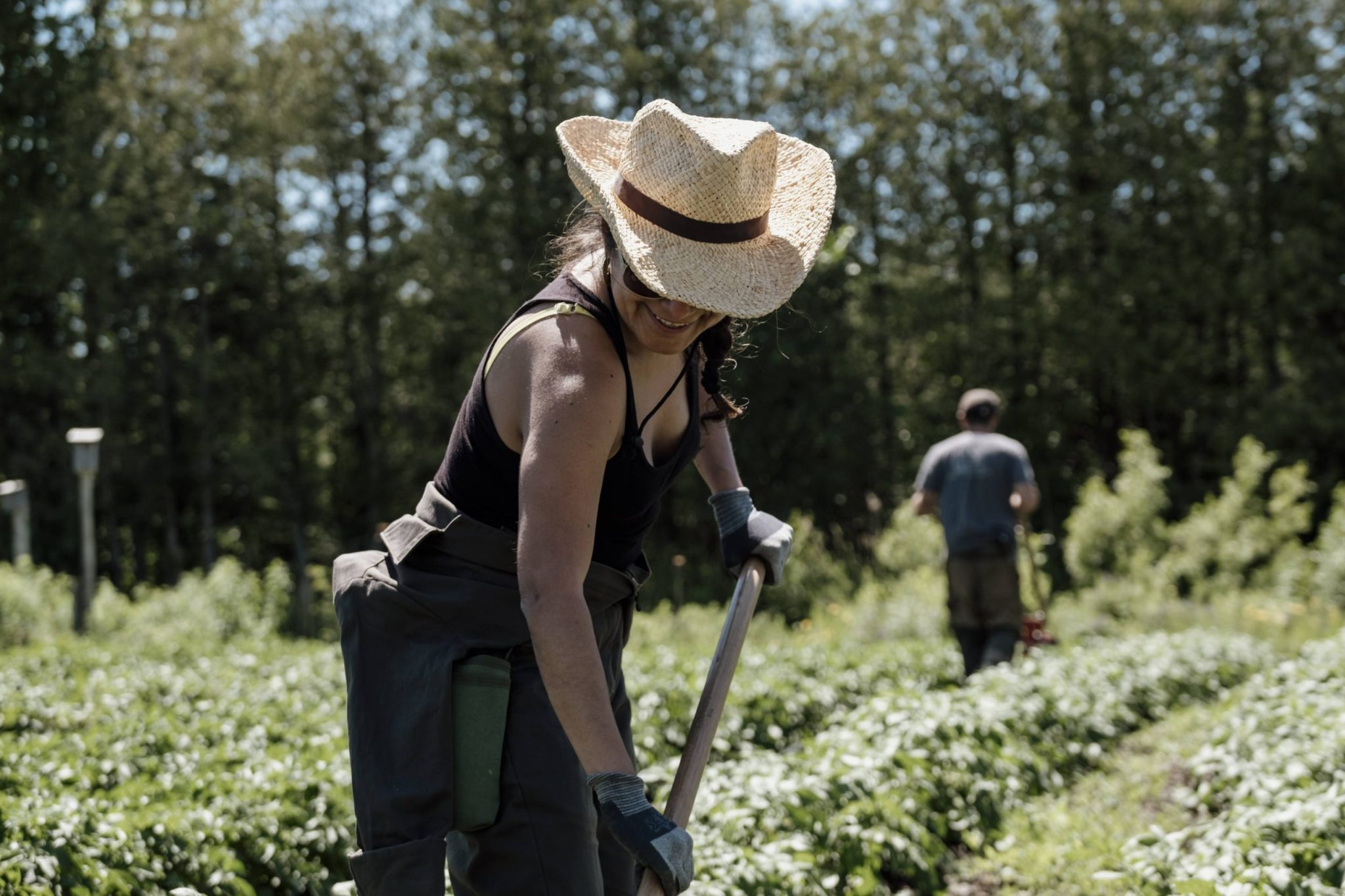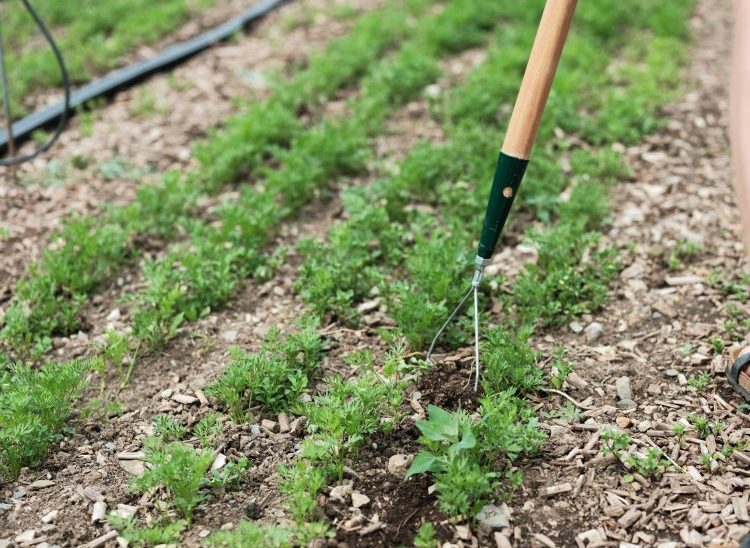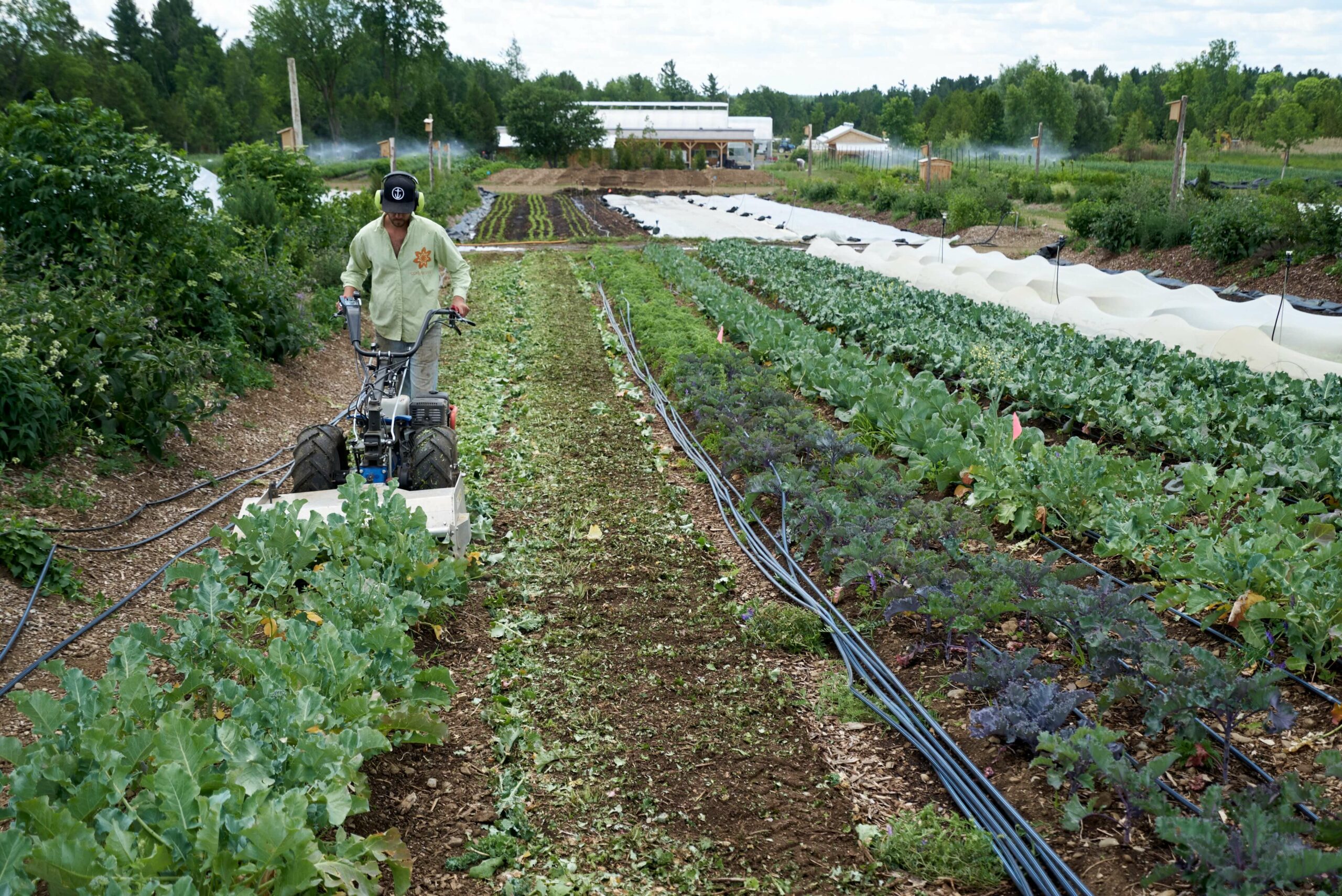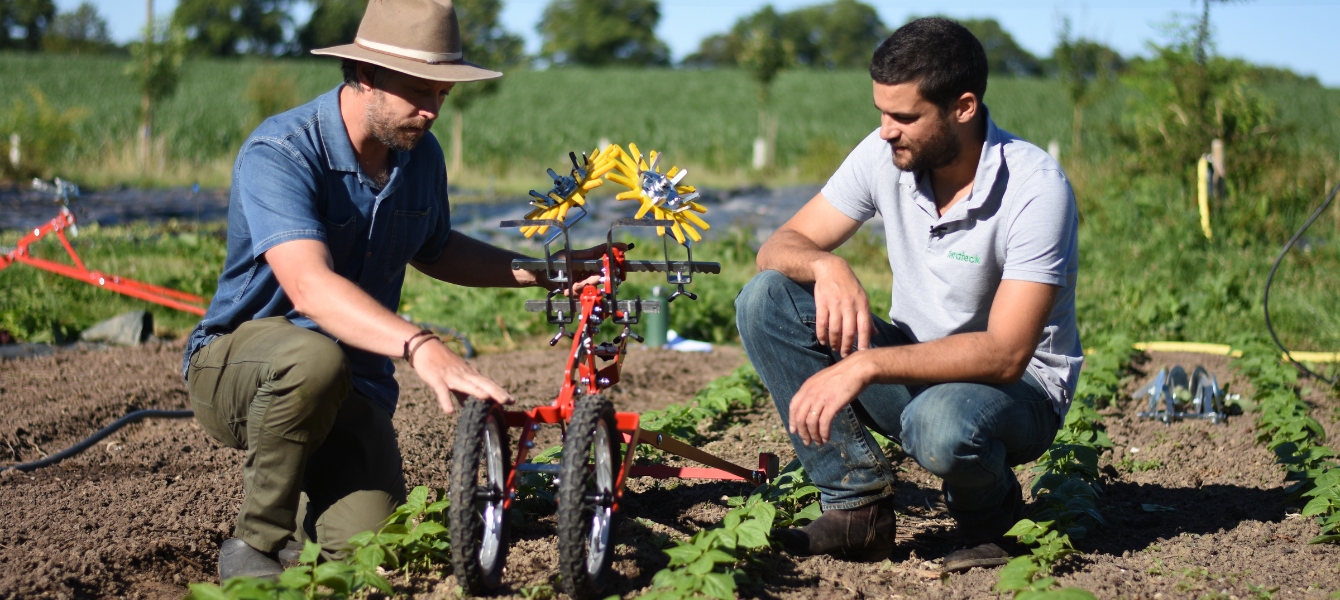Organic vegetable growers – may they be home gardeners, market gardeners, or full-on tractor-based farmers – all have one thing in common: they have to deal with weeds.
Weeds compete with vegetables for water, nutrients, and growing space, and the success of your crops greatly depends on keeping weeds in check. When using hand tools in a market garden, the best way to achieve optimal weed control is to work with the right hoe for the right job. Due to the high number of models available, choosing which one to use can quickly become puzzling.
To help you with those choices, here are some insights on the must-have hoes (including some newer models) that we use and recommend in the Market Gardener Masterclass.
Although there are a lot of different types, hoes are always built on the same principle: they are composed of a long handle on which a tool is mounted. There are different models of this style of tool, but the goal is all the same: cultivating the soil.
The bigger weeds get, the more difficult they are to control. Therefore, the most effective way to deal with weeds is to get to them before they are established – at the stage when lightly disturbing the soil is enough to kill them. The ability to follow this golden rule can make or break a grower.
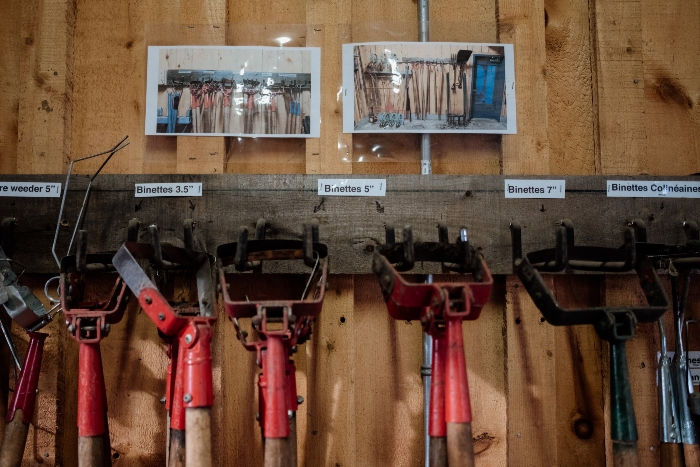
There are three types of hoes that all market gardeners should have in their tool shed: the stirrup hoe, the collinear hoe, and the wire weeder.
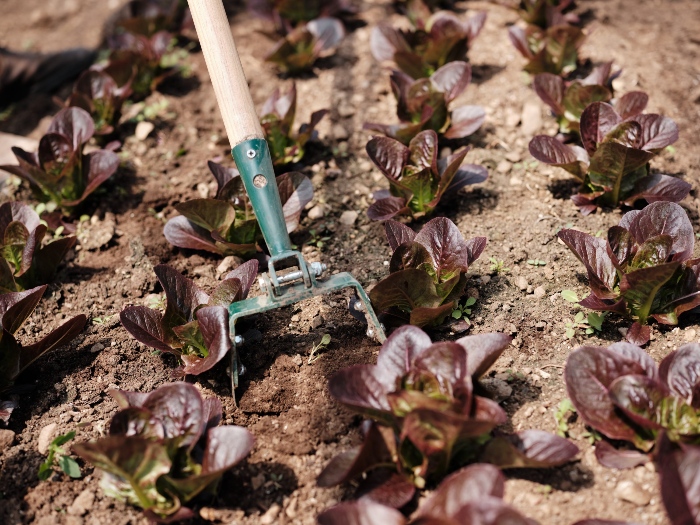
First, the stirrup hoe is an irreplaceable weeding tool and is often the ‘go-to’ option. It is composed of a U-shape blade that moves horizontally as you move the handle. The ones we favor are manufactured in North America and sold by Growers & Co.
Use it to weed between the rows of multi-row crops. Note that there are many blade width options available (3” ¼, 5”, 7”). Choose a larger one for crops with three rows and a smaller one for crops with four or five rows. The goal is to cultivate as close as possible to the plants.
Stirrup hoes can be used for weeding by continuously pushing and pulling the tool on the soil. Apply some pressure to guide the blade to the depth (right below the ground) where you can cut the weeds before they get too big. Avoid going too low in the soil, since it will affect your soil structure and not offer much help with weeding (if anything, this could bring up more weed seeds which would not be welcome!). The key is to cut them at the right stage and area of growth.
There are a lot of tips on how to use stirrup hoes. Some growers prefer doing one row at a time, while others do two or three rows at the same time. This does not really matter, the most important considerations are that 1) the weeds are killed efficiently, 2) the task is completed quickly and 3) most of the soil surface is cultivated.
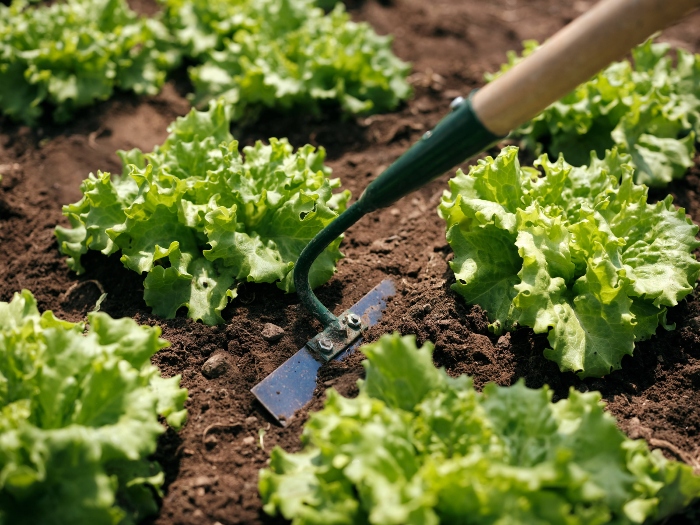
The collinear hoe is another unbeatable tool. It was developed by Eliot Coleman, one of the pioneers of organic farming in the United States. Coleman’s model is sold by Johnny’s Selected Seeds. Growers & Co. also developed a solid collinear hoe.
The collinear hoe has a 7″ fixed blade that is bent at a 70-degree angle. Use it to weed under head lettuce or other leafy vegetables. This is the tool’s greatest advantage: the small profile of its blade makes it perfect for weeding very closely to plants, leaving almost no weeds behind.
To use this tool, the most important tip is to hold the long handle with your thumbs up. This allows you to keep your back straight and will keep you going for hours! Start weeding by dragging the tool in the soil. To choose the right depth, watch as you go and see if the weeds are being removed effectively. Go at the minimal soil depth to cut the weeds below their growth point.
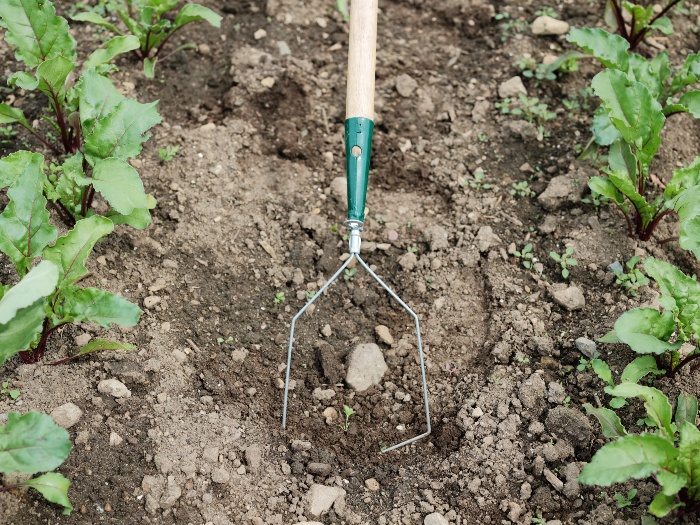
The interchangeable wire weeder is another long-handled hoe and a common favorite for farmers and gardeners. The model of interchangeable wire weeder we prefer is manufactured by Growers & Co. The tool mounted on the long handle is a wire folded in a triangle shape. The Growers & Co. interchangeable wire weeder comes with three different wire sizes that can be easily interchanged.
We use this specific hoe for killing germinating weeds on multi-row crops. One of its greatest advantages is that it does not include a blade. This means there is less risk of cutting your crop (or drip tape!) while weeding. It also means that roots are pulled and not cut. This decreases the risk of weeds re-growing after they’re cut.
Use the wire weeder by dragging it slightly below the soil surface. Note that the triangle made of wire has three sides to it: the largest side (5 inches), the smaller side (1 inch), and the corner. Vary the side you use to reach every weed.
Finally, this tool also comes with an open-ended flex tine that allows you to work over your drip tape, saving you lots of time instead of having to move the tape around.
In addition to these classic hoes, new models have become available in the last few years. Here are two that we’ve incorporated into our weeding tasks.
Manufactured by the European company Terrateck, the Spring Hoe is a great addition to our tool-shed. The tool is composed of a set of two blades combined with two spring tines. Its innovative value is due to this combination of two functions in one; it allows the grower to weed on the row and between the row at the same time, leading to great results.
Use the spring hoe on crops like head lettuce and fennel by placing the row between the two blades. Then, start walking by keeping an eye on the tool to make sure it stays well centered. Aim to keep the blades shallowly in the soil. The tines will open around each plant, weeding as closely as possible during the process.
With all of these options available, the best thing to do is to try a few of these hoes and stick with what works best on your farm. Once you have assembled your hoe kit, maintain it by assigning each hoe a specific spot in your tool shed. Then, provide extra care for your stirrup and collinear hoes by sharpening them regularly.



